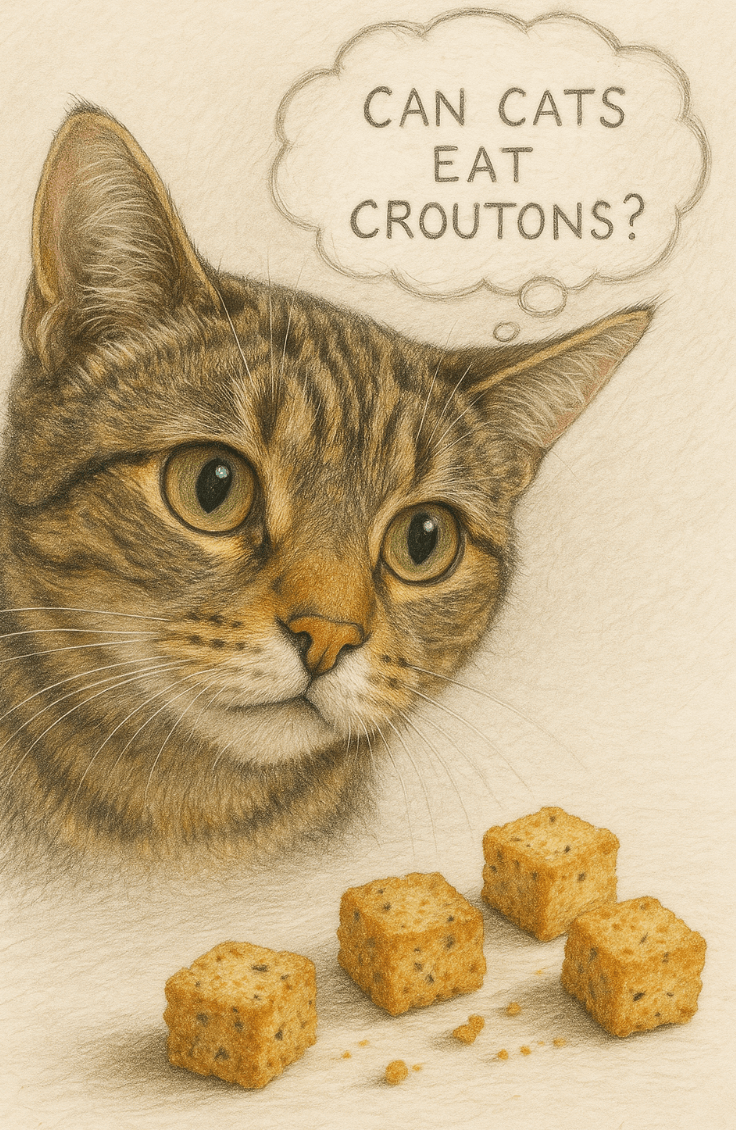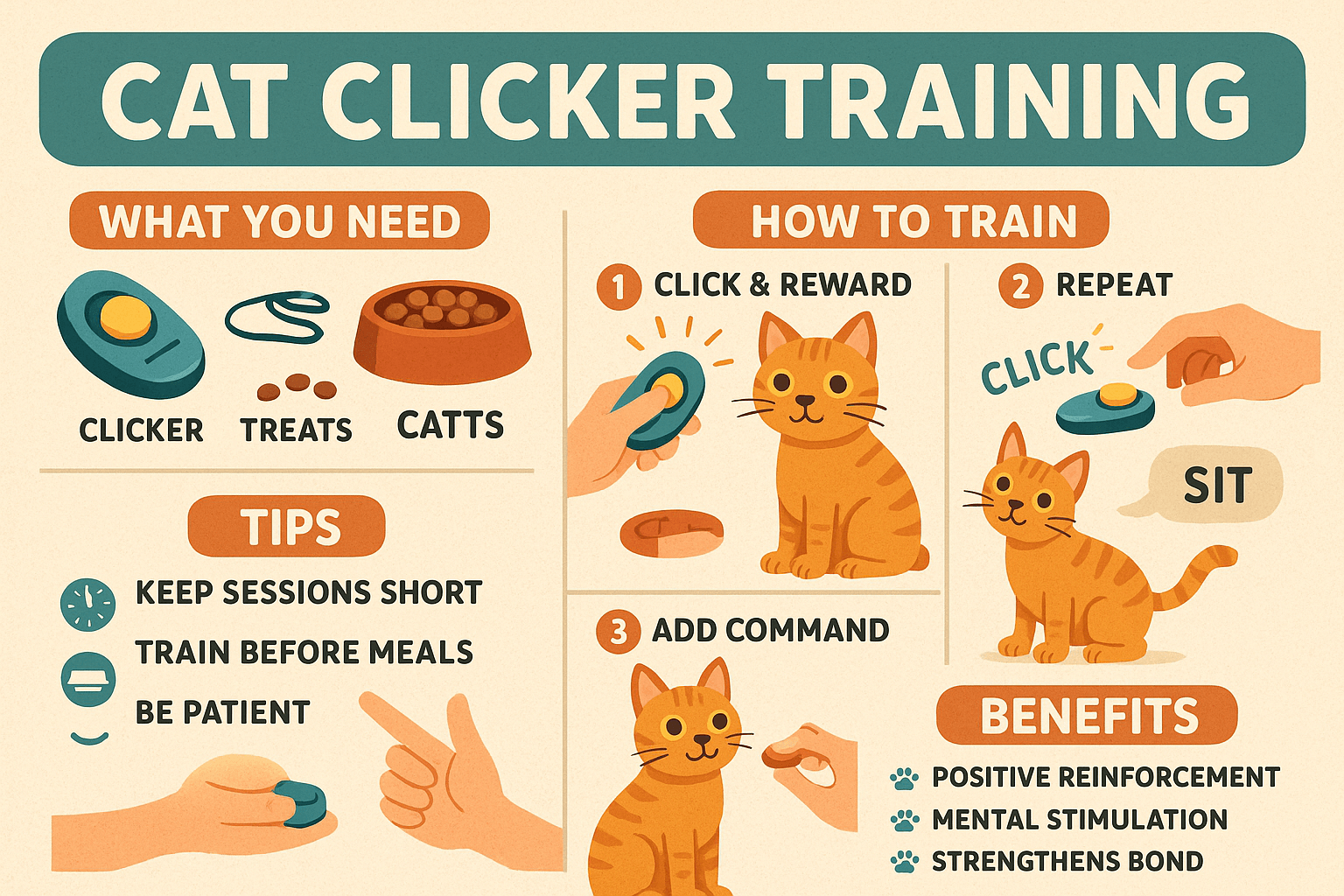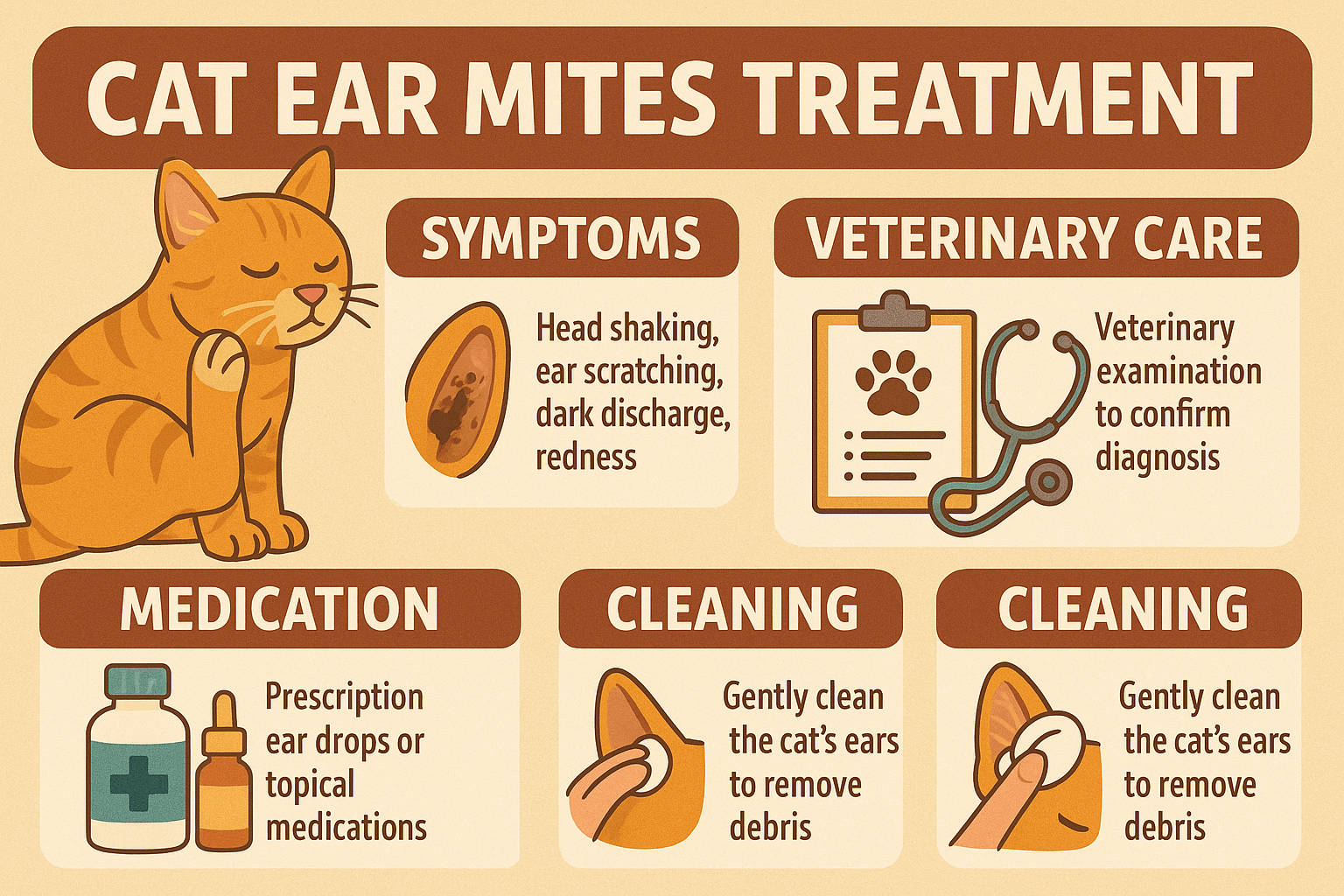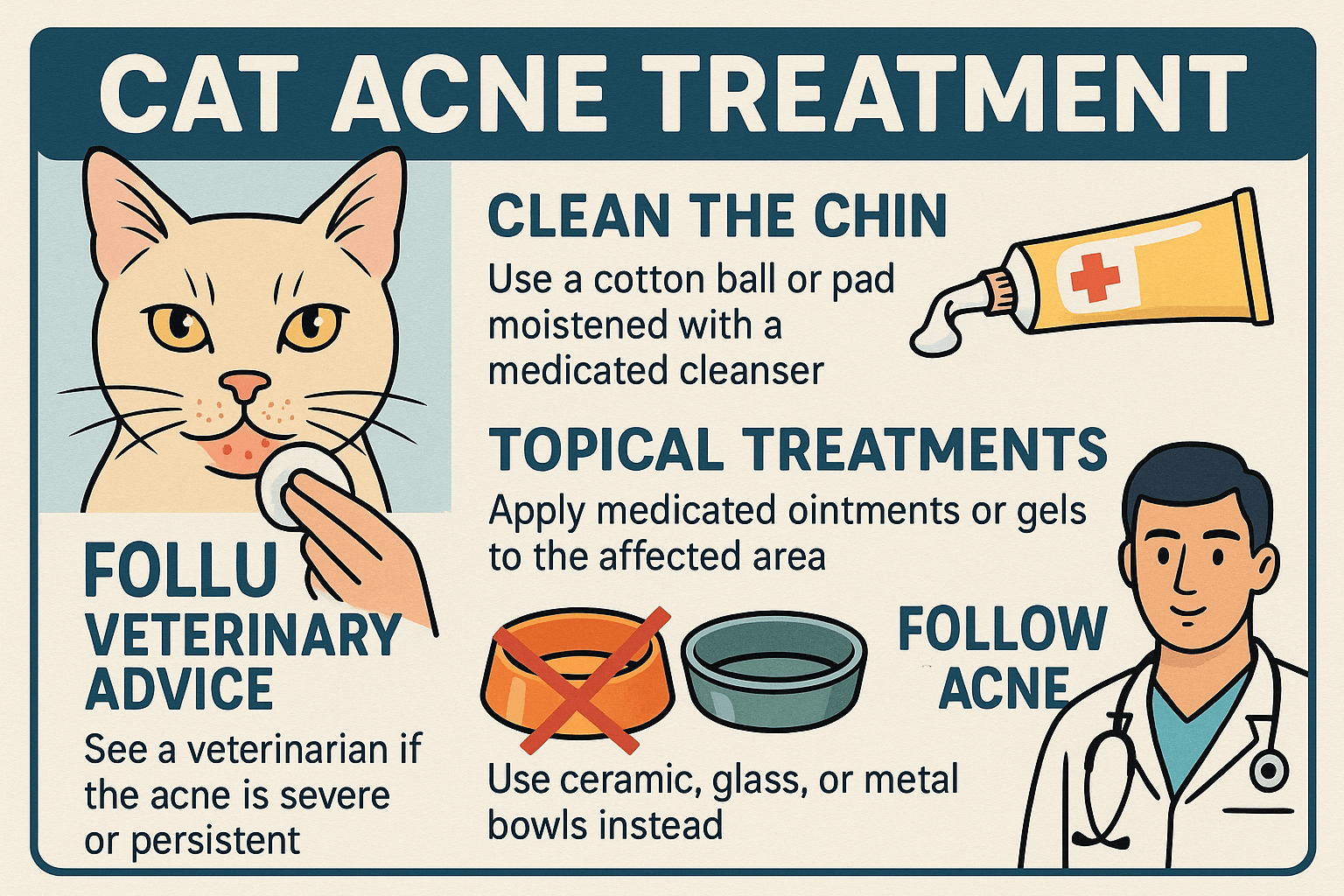Can Cats Eat Croutons?
As a cat owner, you’ve probably caught your feline friend eyeing your plate during mealtime. If you’ve ever wondered whether it’s safe to share croutons with your cat, you’re not alone. While these crunchy bread bites might seem harmless, cats have unique dietary needs that differ significantly from humans. Understanding what foods are safe for your cat is essential to ensure their health and well-being. In this blog post, we’ll explore whether croutons are suitable for cats, potential risks, and safer alternatives to keep your furry companion happy and healthy.
Potential Risks of Feeding Croutons to Cats
While croutons may seem like a harmless snack, they can pose several risks to your cat’s health. Here’s why you should think twice before offering them a piece.
High Salt Content:
Many croutons are heavily seasoned with salt, which can lead to dehydration or sodium ion poisoning in cats.Artificial Additives:
Flavors, preservatives, and spices often found in croutons can upset your cat’s stomach or cause allergic reactions.Carbohydrate Overload:
Cats are obligate carnivores and don’t need large amounts of carbohydrates, which can contribute to weight gain or digestive issues.Choking Hazard:
The hard and crunchy texture of croutons can pose a choking risk, especially for smaller or older cats.Garlic and Onion Risks:
Some croutons contain garlic or onion powder, both of which are toxic to cats and can damage their red blood cells.
These risks highlight why croutons are best avoided as a treat for your feline friend.
Safer Alternatives to Croutons for Cats
If your cat is curious about human food, there are plenty of safer and healthier options to satisfy their curiosity. These alternatives align better with their nutritional needs.
Plain Cooked Chicken:
Unseasoned, boneless chicken is a protein-rich snack that cats love and can safely enjoy.Steamed Green Beans:
Low in calories and high in fiber, green beans make an excellent occasional treat for cats.Small Pieces of Fish:
Cooked fish like salmon or tuna (without seasoning) provides omega-3 fatty acids beneficial for their coat and overall health.Cat-Specific Treats:
Commercial cat treats are formulated to meet feline dietary requirements and come in a variety of flavors.Pumpkin Puree:
Plain, unsweetened pumpkin puree aids digestion and can help with hairballs when given in moderation.
By offering these alternatives, you can indulge your cat’s curiosity without compromising their health.
Check this guide 👉Can Cats Eat Bone Marrow? Best 7 Expert Tips!
Check this guide 👉Can Cats Eat Goji Berries? Best 7 Expert Tips!
Check this guide 👉Can Cats Eat Craisins? Best 7 Expert Tips!

Foods Safe for Cats | Foods Unsafe for Cats |
|---|---|
Plain cooked chicken | Croutons with garlic or onion |
Steamed green beans | High-sodium snacks like chips |
Small portions of plain fish | Chocolate or sugary desserts |
Catnip-infused treats | Alcohol or caffeinated beverages |
Plain pumpkin puree | Grapes and raisins |
Signs Your Cat May Have Eaten Something Harmful
Even with precautions, accidents can happen. Knowing the signs of food-related distress can help you act quickly if your cat ingests something harmful like croutons or other unsafe foods.
Vomiting or Diarrhea:
These symptoms often indicate gastrointestinal upset caused by inappropriate foods.Lethargy or Weakness:
A sudden lack of energy could signal poisoning or nutrient imbalances.Excessive Drooling:
Drooling may occur if your cat has consumed something irritating or toxic.Difficulty Breathing:
This could indicate an allergic reaction or blockage in their airway.Loss of Appetite:
Refusing food is a common sign that your cat isn’t feeling well after eating something unusual.
If you notice any of these signs, contact your veterinarian immediately to address potential issues.
Tips for Introducing New Foods to Your Cat
If you’re considering offering your cat new foods, it’s important to do so carefully and responsibly. Follow these tips to ensure their safety and satisfaction.
Start Small:
Introduce new foods in tiny portions to monitor how your cat reacts before giving more.Avoid Seasonings:
Stick to plain, unseasoned foods to prevent digestive upset or toxicity.Observe for Allergies:
Watch for signs of itching, swelling, or vomiting, which could indicate an allergic reaction.Consult Your Vet:
Always check with your veterinarian before adding new foods to your cat’s diet.Stick to Cat-Friendly Options:
Prioritize foods specifically known to be safe and nutritious for cats.
Following these guidelines ensures your cat enjoys new foods safely and without complications.
Common Mistakes to Avoid When Feeding Cats Human Food
Feeding your cat human food can be tricky, and mistakes can lead to health problems. Here are some pitfalls to avoid when sharing your meals with your pet.
Ignoring Ingredient Labels:
Many processed foods contain hidden toxins like garlic, onion, or artificial sweeteners harmful to cats.Overfeeding Treats:
Even safe treats should be given sparingly to avoid upsetting your cat’s balanced diet.Assuming All “Natural” Foods Are Safe:
Some natural foods, like grapes or avocados, are toxic to cats despite being healthy for humans.Forgetting Portion Control:
Large portions of human food can overwhelm your cat’s small digestive system.Neglecting Veterinary Advice:
Always consult your vet before introducing new foods to ensure they align with your cat’s specific needs.
Avoiding these mistakes ensures your cat stays safe and healthy while enjoying occasional treats.
Understanding Your Cat’s Unique Dietary Needs
Cats require a diet tailored to their biology as obligate carnivores. Understanding their nutritional requirements helps you make better feeding decisions.
High Protein Requirement:
Cats thrive on animal-based proteins, which provide essential amino acids like taurine for heart and eye health.Low Carbohydrate Tolerance:
Unlike humans, cats don’t process carbs efficiently, making high-carb foods like croutons unsuitable.Hydration Needs:
Cats often don’t drink enough water, so moist foods help keep them hydrated and support urinary health.Limited Taste Buds:
Cats have fewer taste buds than humans, meaning flavor isn’t as important to them as texture and smell.Sensitivity to Toxins:
Certain substances harmless to humans, like caffeine or alcohol, can be deadly to cats even in small amounts.
Recognizing these needs ensures you feed your cat appropriately and avoid harmful foods.
Fun Ways to Treat Your Cat Without Croutons
There are plenty of creative and safe ways to spoil your cat without resorting to risky human snacks. These ideas cater to their preferences while keeping them healthy.
DIY Cat Treats:
Make homemade treats using ingredients like tuna, chicken, or pumpkin for a personalized touch.Interactive Feeders:
Puzzle feeders or treat-dispensing toys engage your cat mentally and physically during snack time.Freeze-Dried Meat Snacks:
Freeze-dried chicken, beef, or fish provide a crunchy texture cats love without added preservatives.Cat Grass:
Growing cat grass indoors offers a safe way for your cat to nibble on greens naturally.Special Occasion Meals:
Prepare a special “cat-safe” meal for holidays or birthdays using approved ingredients like boiled turkey or carrots.
These fun and safe options allow you to bond with your cat while ensuring their treats are both enjoyable and nutritious.
Frequently Asked Questions About Cats and Croutons
Are croutons toxic to cats?
While not inherently toxic, croutons often contain ingredients like salt, garlic, or onions that can harm cats.
What happens if my cat eats a crouton?
A single crouton is unlikely to cause harm, but monitor your cat for symptoms like vomiting or diarrhea.
Can kittens eat croutons?
Kittens are more vulnerable to dietary issues and should never be given croutons or similar human foods.
How can I tell if my cat has eaten something unsafe?
Look for signs like vomiting, lethargy, drooling, or difficulty breathing, and consult your vet if needed.
What are the best treats for cats?
Opt for cat-specific treats or safe human foods like plain chicken, fish, or pumpkin puree.
Prioritizing Your Cat’s Health When It Comes to Food Choices
While it’s tempting to share your snacks with your feline companion, not all human foods are safe for cats. Croutons, in particular, pose unnecessary risks due to their high salt content, artificial additives, and potential inclusion of toxic ingredients like garlic or onion. By understanding your cat’s dietary needs and opting for safer alternatives, you can keep them healthy and happy. Remember, your cat relies on you to make the best choices for their well-being—so always prioritize their health over curiosity or convenience.
Cat Clicker Training: Best 7 Expert Tips! Discover how to train your cat using clicker techniques, improve behavior, and strengthen your bond with simple, effective strategies.
Lorem ipsum dolor sit amet, consectetur adipiscing elit. Ut elit tellus, luctus nec ullamcorper mattis, pulvinar dapibus leo.
Cat Ear Mites Treatment: Best 7 Expert Tips! Discover effective solutions to treat and prevent ear mites in cats, ensuring your pet's comfort and health with expert advice.
Cat Acne Treatment: Best 7 Expert Tips! Discover effective remedies, prevention strategies, and expert advice to treat and manage feline acne for a healthier, happier cat.




